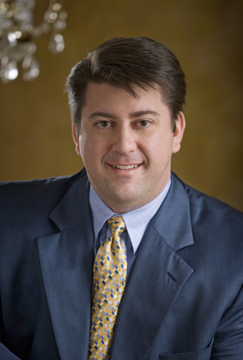Here are five spine surgeons' thoughts on big topics and trends in the spine field today.
Sign up for our FREE E-Weekly for more coverage like this sent to your inbox!
Spine surgeon employment
 Gunnar B.J. Andersson, MD, PhD, Chairman Emeritus of the Department of Orthopedic Surgery, Rush University Medical Center in Chicago: As government and private payers pilot new methods of bundling payments for entire episodes of care — including site-of-care reimbursement, as well as device acquisition and fees for physicians and other healthcare providers — it will be more likely that surgeons will become more closely aligned with hospitals and ambulatory surgical centers. Some will choose to be employed, while others may simply wish to contract with those entities while maintaining more autonomy. I suspect most surgeons would choose to maintain some level of independence until or unless it seriously impacts their ability to make a living.
Gunnar B.J. Andersson, MD, PhD, Chairman Emeritus of the Department of Orthopedic Surgery, Rush University Medical Center in Chicago: As government and private payers pilot new methods of bundling payments for entire episodes of care — including site-of-care reimbursement, as well as device acquisition and fees for physicians and other healthcare providers — it will be more likely that surgeons will become more closely aligned with hospitals and ambulatory surgical centers. Some will choose to be employed, while others may simply wish to contract with those entities while maintaining more autonomy. I suspect most surgeons would choose to maintain some level of independence until or unless it seriously impacts their ability to make a living.
Medicare & private payer reimbursement
Richard Kube, MD, CEO of Prairie Spine & Pain Institute and Prairie SurgiCare in Peoria, Ill.: I think that reimbursements as a whole are dropping whether it is Medicare or the standard PPO. I believe there's an opportunity for a win-win situation for the physician and society is to create an integrated spine care model. This moves most if not all of the spine-related services under one roof. The physician has the opportunity to offset reduced margins with more volume and more service lines.
for a win-win situation for the physician and society is to create an integrated spine care model. This moves most if not all of the spine-related services under one roof. The physician has the opportunity to offset reduced margins with more volume and more service lines.
From society's standpoint, the care will be less costly, more efficient and more convenient, i.e. greater value. Given most physician offices are compensated at rates often less than half that of the hospital alternative, huge savings can be seen in this model for patients, PPOs and Medicare. Satisfaction scores are higher for patients given the convenience and the ability for the care team to work together to provide more favorable outcomes.
MedPAC found in 2005 that PT integrated into physician groups posted a 38 percent savings over the independent models. We know this also holds true for procedures performed at ambulatory surgical facilities. For those physicians resisting hospital employment, the solution is to create an integrated care model and compete directly with the hospitals for spine care services.
Spine technology innovation
 Hyun Bae, MD, is the Director of Education at Cedars-Sinai Medical Center and the Medical Director of the Spine Institute in Santa Monica: We are going to see very little innovation because the pathway is very difficult. It's arduous to get a novel device through the FDA. I've seen many devices go through the FDA process that never got approval. Companies are getting very cautious about spending the amount of money that is takes to complete the trial with the risk of eventual denial.
Hyun Bae, MD, is the Director of Education at Cedars-Sinai Medical Center and the Medical Director of the Spine Institute in Santa Monica: We are going to see very little innovation because the pathway is very difficult. It's arduous to get a novel device through the FDA. I've seen many devices go through the FDA process that never got approval. Companies are getting very cautious about spending the amount of money that is takes to complete the trial with the risk of eventual denial.
A recent example is [Spinal Kinetics] M6, a great cervical disc used in Europe for a long time. Recently, they've withheld their trial in the U.S., thinking it may be too costly and risky. I think that in the U.S., implant-related innovation that requires an [Investigational Device Exemption] is going to be pretty rare.
The clinical trials we are going to see for new devices and procedures will not target minimally invasive surgery but minimally invasive procedures. They will be targeting early intervention in the spinal disease cascade for interventional spine specialist and less so for spinal surgeons. Before, most of the trials were for spinal surgeons. The new clinical trials will be before both.
There is a tremendous amount of interest in clinical trials looking at degenerative disc disease and treatment of low back pain. Recent device trials were centered on disc replacement but now treatments are centered on regenerative therapies which can be performed at surgery centers, such as injecting discs with fibrin glue or stem cells and early cartilage cell growth factors. All of these clinical trials that involve the injection of discs can be done by both surgeons and interventionalists.
Minimally invasive spine surgery techniques
Lawrence Lenke, MD, Chief of Spinal Surgery, Washington University School of Medicine in St. Louis: A lot of the surgeries now are performed through smaller incisions with less tissue disruption and morbidity. Some specialties adopted minimally  invasive procedures quickly, such as laparoscopic cholycestectomy, but that change hasn't been so rapid in spinal surgery. The surgeries we do are challenging to perform safely and reproducibly, and we're looking for procedures that will help us spend less time performing surgery. We have made some nice progress in these areas, especially for degenerative spine problems with short level fusions.
invasive procedures quickly, such as laparoscopic cholycestectomy, but that change hasn't been so rapid in spinal surgery. The surgeries we do are challenging to perform safely and reproducibly, and we're looking for procedures that will help us spend less time performing surgery. We have made some nice progress in these areas, especially for degenerative spine problems with short level fusions.
I think we will continue to move forward with minimally invasive procedures. The training programs now are very formal and orthopedic and neurological spinal surgery fellows have access to additional training for minimally invasive spinal surgery techniques. I think the more people who specialize just in spinal surgery will help our field. When you focus on spine, you are better with indications, procedures and outcomes.
Biologics in spine surgery

Next, we can optimize the biological technologies that we currently have. We have some great biologics currently available, but very little data on the efficacy of any one individual product or class of products. As surgeons, we are scientists, and we need to demand scientific data to prove that our current biological treatments and bone grafting extenders/options actually work. There is a huge discrepancy between the enormous number of biological products currently on the market and the amount of real, unbiased scientific data showing that these products actually work. We need to see data that proves efficacy. We should not be using products that have no proven preclinical data, or ones that are not at least gathering some data. This is a real problem in spine surgery today.
Lastly, there are many exciting longer-term basic science treatments that I feel with revolutionize spine surgery and the way we treat spinal disorders. These will still take some time to evolve into proven clinical treatments, but I do believe these are the areas where we will have the largest impact and benefit for our patients.
More Articles on Spine Surgeons:
6 Steps to Improve Spine Patient Safety & Reduce Associated Healthcare Costs
10 Must-Read Business Articles for Private Practice Spine Surgeons
Building Strong Referral Source Relationships: 5 Steps for Spine Surgeons


